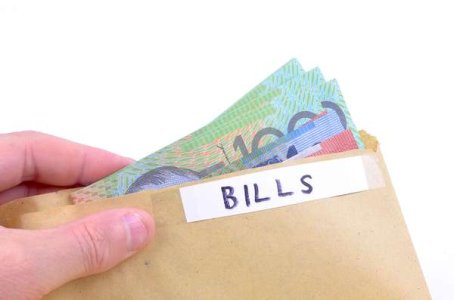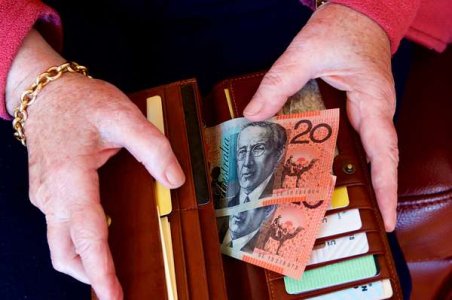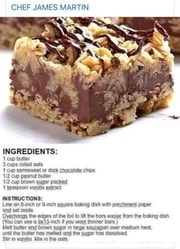Could 'Cash Stuffing' be the money-saving trick you need?
As the cost of living increases, everyone is looking for ways to stretch their budgets and save more money.
Recently, a budgeting tip called ‘Cash Stuffing’ has been gaining massive popularity on social media. It’s essentially an upgraded version of the traditional ‘envelope system’.
According to the Reserve Bank of Australia, cash only makes up 13 per cent of all payments made in Australia. But this ‘Cash Stuffing’ technique has some people packing their wallets again.
So, what is Cash Stuffing?
It is a budgeting trick that involves taking out cash on payday and then allocating this money into separate physical wallets for expenses such as groceries, petrol, and dining out.
The ultimate aim is to spend less as the weeks go by. Therefore, you will put more money towards a savings pot for the future.
A woman who works full-time, Madison Lahiff, has been using this method for over a year now, and she shared her experience with a news source: 'When you have a card, it is really, really easy to just go into the shops and buy whatever you want.'
She added, 'When you have cash, you're less likely to spend it … [and] because it is visual, you can see where you can cut down.'
Madison said having the cash on hand makes it easier for her to comprehend what she’s saving per week. She also pointed out that cards can incur a transaction fee we don't always notice.
Financial Expert and CEO of WeMoney, Daniel Jovevski, admitted to being very surprised when he initially heard about cash stuffing.
It seemed like a paradox to him: ‘Most people don't carry around a wallet anymore,’ he said.
Then he thought about it from another perspective: Some people often resort to solutions like this in the face of financial pressure, plus this trend on social media indicates that people are seeking inspiration on how to budget better.
He explained there is a physical pain when paying in cash: ‘If we see a $100 note broken up in your wallet, we feel pain. With a card, you don't have that same feeling, as you don't see the physical breaking up of the cash.’
However, this system isn’t perfect, and there are some drawbacks–such as being unable to use cash to pay certain things like rent.
Madison overcame this by allotting a certain amount to those expenses in her bank and having the direct debits come out of that. She also has her card on standby in case some merchants prefer card transactions.
As for returns and savings, she made sure with each payday, she put all the remaining funds back in her bank account where it could collect interest.
However, Mr Jovevski believes that the ‘Cash Stuffing’ trend will not last, explaining that consumers will revert naturally to the most convenient payment method.
‘I think [cash stuffing] has a very niche appeal because, at the end of the day, most consumers resort to having less friction.’
But for Madison, this technique is the best one for her: ‘I've completely found that this has helped me save more money than I ever have.’
We shared an article about this budget trick last year, and our SDC members weighed in on the subject:
Member @JayEeGeeP shared: ‘Always managed our income that way, worked really well.’
Member @fergy vouched for this technique: ‘I have been doing this for 30 years... I have since modified it by putting all regular bill money into one bank account where there is ALWAYS enough money to cover regular bills, e.g. gas, electricity, water, car rego, insurances, etc. I use different purses for petrol, food, hobbies, outings, etc.'
'I'm never broke! It works! P.S. I am on an age pension, I travel & I never go without.’
Other members mentioned other tricks they find more effective.
Member @Senor explained: ‘I used a somewhat different approach. I have been tracking our expenses for the past 25 years. It provides real figures applicable to us, not some theoretical figures as per ASFA or other groups.’
‘This tracking of expenses provides one of the inputs into how much money we need in our retirement without impacting our lifestyle too much. Over the next period of time, when I retire, we feel the money aspect is catered for. I feel that unless money is properly managed, lifestyle in retirement can be constrained. Note that this is different for every individual.’
Member @mylittletibbies said: ‘I keep an exercise book and keep a record of my expenses. Each year I work out a budget of all my expenses and then calculate how much I need to put aside each fortnight to cover these expenses. On one side of my book, I keep a description and the opposite page is divided into columns, i.e. in, out, bills, shopping, savings, keycard and total.’
‘No need to draw out cash, just move amounts into the appropriate columns you will always have funds to cover all your expenses (of course, you must have the willpower not to spend the money for indiscriminate spending) from any of the columns, except the keycard column, which should be the amount left after you have allotted the funds to the appropriate columns. This way, your funds stay in the bank, earning some interest until they are required. All my bills are set up on direct debit, and there are always funds to cover them, and yes, I am a pensioner.’

At the end of the day, money management comes down to everyone’s individual circumstances.
What are your budgeting techniques, members? We’d love to read them in the comments below!
Recently, a budgeting tip called ‘Cash Stuffing’ has been gaining massive popularity on social media. It’s essentially an upgraded version of the traditional ‘envelope system’.
According to the Reserve Bank of Australia, cash only makes up 13 per cent of all payments made in Australia. But this ‘Cash Stuffing’ technique has some people packing their wallets again.
So, what is Cash Stuffing?
It is a budgeting trick that involves taking out cash on payday and then allocating this money into separate physical wallets for expenses such as groceries, petrol, and dining out.
The ultimate aim is to spend less as the weeks go by. Therefore, you will put more money towards a savings pot for the future.
A woman who works full-time, Madison Lahiff, has been using this method for over a year now, and she shared her experience with a news source: 'When you have a card, it is really, really easy to just go into the shops and buy whatever you want.'
She added, 'When you have cash, you're less likely to spend it … [and] because it is visual, you can see where you can cut down.'
Madison said having the cash on hand makes it easier for her to comprehend what she’s saving per week. She also pointed out that cards can incur a transaction fee we don't always notice.
Financial Expert and CEO of WeMoney, Daniel Jovevski, admitted to being very surprised when he initially heard about cash stuffing.
It seemed like a paradox to him: ‘Most people don't carry around a wallet anymore,’ he said.
Then he thought about it from another perspective: Some people often resort to solutions like this in the face of financial pressure, plus this trend on social media indicates that people are seeking inspiration on how to budget better.
He explained there is a physical pain when paying in cash: ‘If we see a $100 note broken up in your wallet, we feel pain. With a card, you don't have that same feeling, as you don't see the physical breaking up of the cash.’
However, this system isn’t perfect, and there are some drawbacks–such as being unable to use cash to pay certain things like rent.
Madison overcame this by allotting a certain amount to those expenses in her bank and having the direct debits come out of that. She also has her card on standby in case some merchants prefer card transactions.
As for returns and savings, she made sure with each payday, she put all the remaining funds back in her bank account where it could collect interest.
However, Mr Jovevski believes that the ‘Cash Stuffing’ trend will not last, explaining that consumers will revert naturally to the most convenient payment method.
‘I think [cash stuffing] has a very niche appeal because, at the end of the day, most consumers resort to having less friction.’
But for Madison, this technique is the best one for her: ‘I've completely found that this has helped me save more money than I ever have.’
We shared an article about this budget trick last year, and our SDC members weighed in on the subject:
Member @JayEeGeeP shared: ‘Always managed our income that way, worked really well.’
Member @fergy vouched for this technique: ‘I have been doing this for 30 years... I have since modified it by putting all regular bill money into one bank account where there is ALWAYS enough money to cover regular bills, e.g. gas, electricity, water, car rego, insurances, etc. I use different purses for petrol, food, hobbies, outings, etc.'
'I'm never broke! It works! P.S. I am on an age pension, I travel & I never go without.’
Other members mentioned other tricks they find more effective.
Member @Senor explained: ‘I used a somewhat different approach. I have been tracking our expenses for the past 25 years. It provides real figures applicable to us, not some theoretical figures as per ASFA or other groups.’
‘This tracking of expenses provides one of the inputs into how much money we need in our retirement without impacting our lifestyle too much. Over the next period of time, when I retire, we feel the money aspect is catered for. I feel that unless money is properly managed, lifestyle in retirement can be constrained. Note that this is different for every individual.’
Member @mylittletibbies said: ‘I keep an exercise book and keep a record of my expenses. Each year I work out a budget of all my expenses and then calculate how much I need to put aside each fortnight to cover these expenses. On one side of my book, I keep a description and the opposite page is divided into columns, i.e. in, out, bills, shopping, savings, keycard and total.’
‘No need to draw out cash, just move amounts into the appropriate columns you will always have funds to cover all your expenses (of course, you must have the willpower not to spend the money for indiscriminate spending) from any of the columns, except the keycard column, which should be the amount left after you have allotted the funds to the appropriate columns. This way, your funds stay in the bank, earning some interest until they are required. All my bills are set up on direct debit, and there are always funds to cover them, and yes, I am a pensioner.’
Key Takeaways
- 'Cash stuffing' is a budgeting trick gaining popularity on social media where individuals withdraw their pay in cash and divide it into categories for expenses.
- The method is considered effective because it offers a visual representation of each person's spending, leading to better financial discipline.
- There are criticisms of the approach, including the inability to pay utilities and rent with cash.
- Despite these criticisms, some argue the method's benefits, namely the increased awareness of their spending, and maintain that surplus cash can still be deposited back into a banking account to accrue interest.
At the end of the day, money management comes down to everyone’s individual circumstances.
What are your budgeting techniques, members? We’d love to read them in the comments below!











